The Zohar and the Kabbalah - (2)
Kabbalah is many things: oral traditions, rituals, meditations, magical practices, books of philosophy and theology, stories... It could be a lifetime of learning. The Zohar is part of the Kabbalistic tradition; it was written by Kabbalists and has been studied in depth mostly by Kabbalists. Yet, because Kabbalah is taught in many ways, having learned a little of it does not necessarily help in understanding the Zohar; and I would argue that you do not have to be interested in Kabbalah to appreciate and explore the Zohar.
The Zohar's purpose is not to teach us Kabbalah; it assumes that we know Kabbalah. Other Kabbalistic books, even when they speak in hints rather than openly, tend to be fairly systematic expositions of ideas. (Two accessible examples, rewarding to study, which are available in English translations, are The Palm Tree of Deborah by Rabbi Moshe Cordovero [16th century], and Gates of Light by Rabbi Joseph Gikatilla, who may have been one of the authors of the Zohar.) Such books do mean to teach you Kabbalah. The Zohar starts with Kabbalah and wants to take you further. For this reason, it is anything but systematic; its ideas are expressed as challenges and paradoxes, and it is mostly a work of images and stories.
The Kabbalistic commentators on the Zohar approach it as a work to be decoded: its symbolism needs to be translated into theological ideas. The Zohar itself invites this decoding, but, as one of the early commentators, Rabbi Shim'on Lavi, already recognized, the result of a completely successful decoding would be a constant repetition of a few key ideas, which the Zohar returns to over and over again. If the purpose of the Zohar were to teach Kabbalah, it could have been ten pages long, not thousands. Further, completely successful decoding has turned out to be impossible, so that the great commentators offer contradictory interpretations of the same passages, because the Zohar deliberately teases and frustrates the interpreter. At the same time that the Zohar works with Kabbalah, it is also undermining it, in order to take us beyond.
Kabbalah is part of the raw material which the authors of the Zohar were working with. They were steeped in its concepts and built on them. Yet they drew at least as much on the Bible; on midrashic literature; on their own physical lives and experiences. Knowing about early Kabbalah can help us to understand the Zohar, but so can knowing Scripture or, especially, being aware of our own physical and emotional being. In the words of my teacher, David Greenstein, "the Zohar succeeds in reinventing kabbalistic consciousness by restoring its connection to lived reality."
CRASH COURSE IN KABBALAH
Since knowing some specific details about Kabbalah can be a help in understanding the Zohar, here are a few remarks on two Kabbalistic key-words: "secrets" and "Sefirot".
Secrets
The Zohar often introduces its teachings as "secrets" and "mysteries". This is a stylistic feature which it shares with other Kabbalistic books. Kabbalah as a whole is often referred to as "nistar" or "chokhmat hanistar" -- "the mystery" or "the secret wisdom". It presents itself as esoteric lore, only for the initiated. Kabbalistic books emphasize that they are based on secret traditions passed on orally from one initiate to another, and that the authors know some things that are too secret to put into writing at all. It is often not clear how much of the secrecy is real. In the Middle Ages, as today, mysterious depth and secrecy had an appeal and were paradoxically a tool for attracting more students and readers. Typically, the Zohar will be very un-secretive about advertising its secrets. To paraphrase my teacher Rabbi David Greenstein's way of paraphrasing it: "There's a secret coming! A BIG secret! ... Did you catch that secret?" On the other hand, the authors of the Zohar will sometimes slip in something truly esoteric, truly radical, without labelling it as a secret at all -- which is one of the most effective ways of hiding it.
What can the whole idea of "secrets" mean to us? There is a Hasidic teaching which looks at this from a spiritual-devotional standpoint. Although this is probably not what the authors of the Zohar had in mind, I find it very helpful:
I heard from the holy mouth of Rebbe Menachem Mendl (of Premishlan) of blessed memory: A mystery is something that a person cannot communicate to another person. It is like the taste of food: it is impossible to describe it to a person who has never experienced that taste, impossible to explain to him in words its quality or its essence. Such a thing is called "a mystery". So it is with love and fear of God: it is impossible to explain to another person the quality of the love in your heart. It is called a mystery.
But as for calling the wisdom of the Kabbalah "mystery" (nistar) -- how is it a mystery? Anyone who wants to learn it can look in a book. If they do not understand, they are no different from people who cannot understand the Talmud or the commentary of the Tosafot -- does that make those works "mystery"? No, the essence of all the mysteries in all of the Zohar and the writings of the Ari is clinging to God (devekut)...
Yosher Divrei Emet, section 22
(R. Meshullam Feivish of Zabriza, 1740-1795)
In other words, the real "secrets" or "mysteries" of the Zohar are the inexpressible moments of connection to God which it can awaken for us, each of us in our own way.
Sefirot
One of the most well-known Kabbalistic teachings today, and a key part of most Kabbalistic theology, is the idea of the ten forces or essences called Sefirot. (The singular of Sefirot is Sefirah; originally the word meant "counting" or "number".) There are different ideas in Kabbalah about what the Sefirot are: are they parts of God, separate beings like angels, basic elements of creation? Although these questions are controversial in later Kabbalah, the Zohar assumes that the Sefirot are divine. They are aspects of God, and when we talk about the Sefirot, it is God we are talking about.
The Sefirot are often diagrammed with set names in a set order, like this: 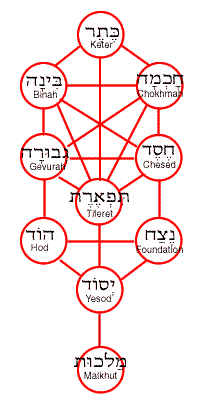
1. Keter (Crown)
2. Chochmah (Wisdom)
3. Binah (Understanding)
4. Chesed (Lovingkindness)
5. Gevurah (Power), also called Din (Judgment)
6. Tif'eret (Beauty)
7. Netzach (Eternity, or Victory)
8. Hod (Splendour, or Acknowledgement)
9. Yesod (Foundation)
10. Malkhut (Dominion)
Before and beyond the Sefirot, and beyond our understanding, is the hidden inwardness of God, called Eyn Sof (Limitless).
There is a flow of divine power and blessing from one Sefirah to another, finally reaching Malkhut, which is the presence of God in the world.
In some ways the Sefirot are independent beings or forces, which interact with each other in various ways. For example, Chesed and Din are opposing forces; Tif'eret and Malkhut are sometimes close to each other and sometimes distant.
In later Kabbalistic teachings the system becomes much more complex. There are Sefirot within Sefirot; there are configurations of Sefirot, called Partsufim (Faces); there are four worlds or levels of reality which each contain ten Sefirot, and so on. Most of these ideas, however, were developed after the time of the Zohar and are not important for understanding the Zohar.
Reflections on the Sefirot
Several of the Sefirot are highlighted in the texts we will be studying. As a preliminary guide, the following are some impressions about them that emerge from my readings of the Zohar.
Keter (Crown) is the most hidden, inward aspect of God that is revealed at all. Keter is pure love. It is also pure potential, the place where everything is possible. Any deep change involves a moment of connection with Keter. The name of God connected with Keter is "Ehyeh asher Ehyeh" -- "I am that I am" or "I will be whatever I will be".
Chochmah, Wisdom, is also very hidden. In human terms, it is pure consciousness, thought before words, or the initial flash of intuition. In the family imagery of the Zohar, Chochmah is the father. The word Chochmah, which is grammatically feminine, can also refer to Malchut, the feminine Presence, when she is connected with the father and bringing his wisdom into the world.
Binah is the hidden source within God. Our texts allude to Her a few times. In the Zohar's imagery She is a great river from which all streams flow out; She is the mother or grandmother of everything. Her name means "Understanding" and is also connected with ideas of making a distinction between things (bein = "between") and building (banah). Within and beyond Her is unfathomable unity; out of Her emerges everything we can understand, the built-up world of distinct entities. Thus Binah is also the beginning of judgment. Before Binah, as far as anything can be perceived at all, it is all love and compassion. With Binah comes the beginning of difference, conflict and limitation, which are necessary for the world as we know it to exist, and the beginning of necessity itself as opposed to freedom.
The first polarities of existence to emerge from Binah are Chesed and Gevurah. They are polarities we can find in ourselves and in our experience of the world; their imagery builds on a tradition found in the Talmud and Midrash which finds them in God. That midrashic tradition speaks about the midat ha-rachamim -- God's attribute of compassion -- and the midat ha-din, God's attribute of justice. The midrashic texts see these "attributes" as polarities of God's personality and even as separate beings competing for God's attention: love on one side, justice on the other side, making irreconciliable demands. The imagery of Chesed and Gevurah also draws on the key Jewish experiential concepts of human love and fear of God. The attribute of compassion, and Chesed, stir our feelings of love; the harshness of the attribute of justice, Gevurah, is frightening.
The fear of God as the Zohar understands it is not just about awe or reverence; it includes terror, and it is a realistic response to a terrifying reality. The Zohar sometimes dwells on this fear response and celebrates it, without sugar-coating it in any way.
Imagistically, Chesed, lovingkindness, is white like mother's milk. It is everything flowing, giving and accepting -- everything in us and the world that says "yes". Gevurah, power, or Din, judgement, is red like blood. It is everything that sets limits, judges, or fights -- everything that says "no". Either can go too far on its own, both are necessary together; always saying yes and always saying no will both get you in trouble.
Netzach and Hod are not connected with very much specific imagery in the Zohar and, like Keter and Chochmah, are not specifically alluded to in the texts in our course as far as I know. They are the mysterious sources of the inspiration of prophecy, and so it seems appropriate for them to remain in the background.
Yesod is alluded to a few times in our texts. Its imagery is often sexual: it is the circumcised penis, that is, the sanctified channel of uniting and creative energy. Yesod is called "tzaddik" ("righteous person") and there are texts in which the Kabbalists particularly identify themselves with Yesod. Perhaps the experience of flowing with creative, erotic energy was dear to them. Much later in Jewish history the Baal Shem Tov boldly taught that a righteous person is compared to Yesod because of the intense pleasure they experience in spiritual life.
Yesod is the link between Tif'eret and Malkhut, the "masculine" and "feminine" poles of divine life. Tif'eret is the Zohar's main image for what is traditionally meant by the word "God", especially in traditional Jewish prayers, in which God is most often called "Father" and "King" and seems to be far beyond us, Someone to reach out to and yearn for.
Malkhut is more connected with a type of image of God that many people today find more comfortable: the presence of God in us and around us. Malkhut is also called Shekhinah, but this is a name which has other meanings in other contexts. In older Midrash, "Shekhinah" is sometimes simply a name for God (not for a particular aspect). In some Jewish feminist thought today, Shekhinah has feminine attributes that make sense to contemporary women, which may be very different from those imagined by the medieval Kabbalists (see Rabbi Lynn Gottlieb's book She Who Dwells Within). In order to avoid confusion we will not use the term "Shekhinah" for Malkhut in this course. The Zohar itself rarely uses either name; as with all the Sefirot, it prefers an array of images.
Malkhut is closer to us than the transcendent, out-there-beyond-us aspect of God; therefore, She is also more mingled with all the ups and downs of our lives and deaths. We can call on God beyond us, Tif'eret, to save us from trouble; from Malkhut, we can only ask that She remain with us in our trouble. Yet because Malkhut is the aspect of reality which we encounter, She includes everything in the world that is terrifying as well as everything good. She is strongly connected with Gevurah and shares its frightening aspect. See, in this course, "The Wisdom of Solomon". Everything good and everything bad in the world "feeds into" her, and she straddles all kinds of borderlines. Therefore there are many possible images of her and ways of thinking about her. Nearly every text in this course has something new to offer about Malkhut; as you read the texts, I invite you to be open to learn something new each time about this way of perceiving how God is present to us.
Gershom Scholem, the founder of the academic field of Kabbalah study, once expressed his personal opionion that "the doctrine of emanations [Sefirot] is the great misfortune of the Kabbalah". Perhaps what he meant is that the system of Sefirot gives the illusion of being a complex enough scheme to really capture reality, but in fact it ends up, like any other system, presenting a very limited picture.
As for the Zohar, it works with this structure, but also works against it -- for example, now and then changing the standard order of the Sefirot, or their set characteristics, to remind you that no system is equivalent to reality. To study Zohar, it is helpful to memorize the standard diagram of the Ten Sefirot -- and then let it slip to the back of your mind.
Labels: Zohar
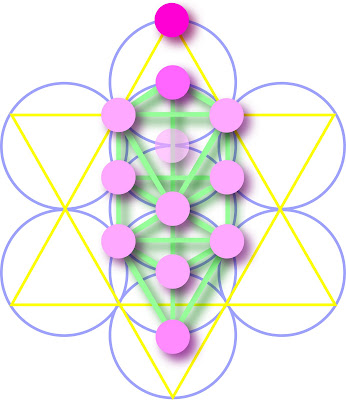
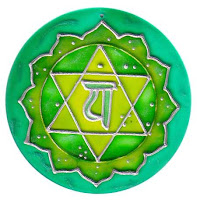

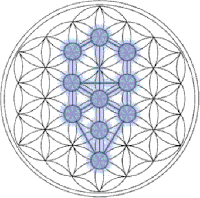

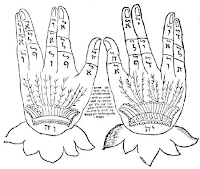

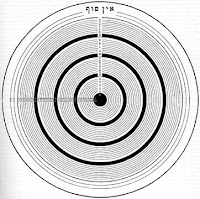
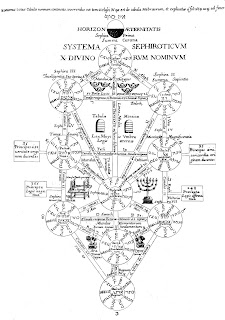
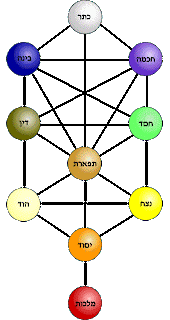
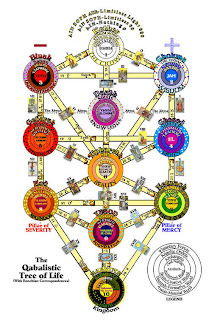


0 Comments:
Post a Comment
Subscribe to Post Comments [Atom]
<< Home